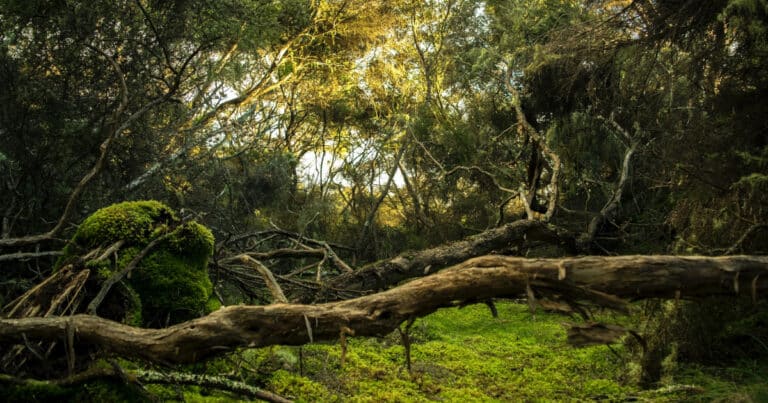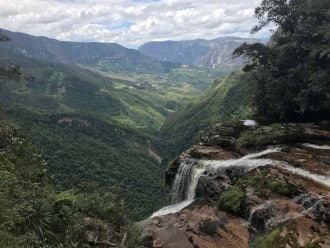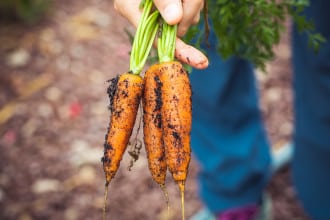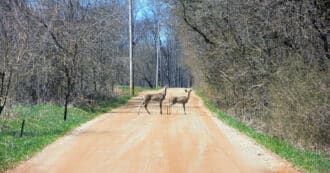By Matthew Mausner and Elisheva Malomet – Biodiversity is a word that sounds complicated, but it just means the variety of life on Earth. There are many different species of animals and plants, as well as microbes and other organisms. Why is biodiversity important? Put simply, the more variety there is in an ecosystem, the healthier the system is.
The health of ecosystems has a huge impact on human beings because we depend on them for our survival—we need clean air to breathe, water to drink, food from crops grown by farmers who use natural fertilizers instead of chemicals (which pollute rivers), and so much more.
When people speak about biodiversity loss they are talking about how humans have degraded or destroyed habitats which can result in the extinction of species – making it harder for future generations to enjoy these places or benefit from them.
Relevance of biodiversity to humans
The more that we understand about biodiversity the better it is for humans. There are so many reasons why protecting biodiversity matters to us, including finding new medicines and maintaining an interconnected ecosystem that sustains life on Earth.
Biodiversity also provides spiritual fulfillment in knowing that God created the variety of life on earth around us that we must protect.
A healthy ecosystem is dependent on biodiversity. The symbiosis of an ecosystem is contingent on all the different species living together and helping each other.
Ecosystems that are rich in species diversity, genetic diversity, and biological diversity are healthy because of the different qualities that the variety of life brings.
Biodiversity: Plants and Animals
A variety of plant and animal life creates a more resilient ecosystem. If a species goes extinct, it will not drastically affect other plants’ survival rates because of other sources for food within their habitat. This also means that when animals eat these plants, they won’t be eating just one type.
This is one of the most important reasons why biodiversity is important. If there was only one source for food and it became harmful or poisonous it would affect all of its consumers. An advantage to diverse ecosystems is the diversity in producer and consumer options.
Biodiversity in Action: Andes Mountains Tropical Hotspot
A hotspot is an ecosystem with very high levels of biodiversity. One such example is the Andes Mountains Tropical Hotspot in South America.
It has high levels of biodiversity due to many different unique habitats, such as alpine grasslands, rainforests, and high plain. These exist side by side in the spectacular microclimates generated by the jagged high peaks of the Andes which plunge down into tropical jungles and coastal valleys.
This creates many interdependent ecological niches in nature which exist nowhere else on earth. The inaccessible nature of the terrain makes it safer for biological diversity to flourish and stay out of reach of human exploitation and destruction.
Biodiversity for our Health
While the impact of biodiversity loss may not seem so great, actually biodiversity provides benefits to our health and medicines. Scientific development in pharmacology occurs in biological diverse spaces and ecosystems.
Treatments for infectious diseases and health problems are derived from traditional medicine sources that utilize natural organisms, microorganisms, and plants.
Biodiversity: Medicine
Regions high in biodiversity, such as the Amazon or the foothills of the Himalaya, are disproportionately sources of medicinal compounds and herbs.
As a civilization, we are doing collectively destroying biodiverse regions by encouraging deforestation of Borneo or Brazil in the name of our logging or ranching ‘needs’.
This causes biodiversity loss, destroying the very flowers, ferns, animals, fungi, or microorganisms that could have been the miracle drug to save us from the next pandemic. And we would never know because it’s possible those species only existed in that small niche, only in that local habitat.
Biodiversity: Agriculture
Agriculture initially developed in certain ecosystems around the idea of humans not just encouraging, but deliberately planting and protecting certain species.
Most forms of ancient agriculture, in almost all places humans were up until 6,000 years ago, tended to preserve and take advantage of local biodiversity, cultivating a wide variety of plant species including those highest in protein or nutritional value.
The diversity itself acted as a survival mechanism to account for fluctuations in harvest, climate, floods, or other normal hazards of nature.
The Agricultural Revolution- against Biodiversity?
But what some scholars call ‘totalitarian agriculture’ began- what is usually termed the ‘agricultural revolution’- around 5,700 years ago.
The hallmark of this was an explicit reduction in biodiversity: land was taken over for the exclusive use of a single crop, usually ‘cereal’ crops that are higher in protein and/or carbohydrates, albeit lower in nutritional value otherwise, such as wheat, barley, lentils, corn, beans, rice, manioc, millet, yams, spelt, amaranth, or quinoa.
A new, adversarial and possessive relationship between human agricultural societies and nature itself developed. Animals and insects that used to freely range across a landscape became seen as enemies of those agricultural societies, redefined as weeds, pests, or vermin if they crossed onto the farms of human cultivation.
By prioritizing and even monopolizing the productive capacity of the land towards maximizing calories exclusively for humans and their domesticated animals, those societies were ‘successful’ and expanded- but there were catastrophic consequences for all the other species in their way.
As ecosystems were made subservient to their human overlords, biodiversity plummeted.
Nutrition and food biodiversity
While it might seem on the surface that the agricultural revolution was to the benefit of humans (or at least to those in the civilizations), their diets became far narrower, largely restricted to the relatively small number of cultivated plants and animals, and the quality of their nutrition declined drastically. Scholars think this is directly related to why biodiversity is so important.
Hunter-gatherer societies typically have scores, even hundreds of edible flora and fauna they use for food throughout the year, and they often prefer not just the diversity of diet but the very movement and migration that brings them to different parts of their region’s healthy ecosystems through the year.
Impoverished Diet in Civilization
By contrast, those in agricultural civilization frequently get their food from less than 10 species of crops and animals. They cut down forests and encounter less wildlife, and the quality of their lives, as well as their nutrition, can decline dramatically.
Thus human encounters with natural biodiversity directly impact our health. The development of infectious diseases proceeds quicker when a region is less biodiverse, as there is less diverse immune reactions and more vulnerability.
Humans are degrading biodiversity
Pollution and climate change are among the consequences of human civilizations not respecting biodiversity. This is one of the reasons why biodiversity is important.
Early civilizations overdid monoculture agriculture, exhausted the soils causing salinization, caused biodiversity loss, and sometimes nothing was left but a salt plain. These impacted vast regions like the Mediterranean basin and Mesopotamia, the northern China plain, the southwestern U.S.
Spirituality of Protecting Biodiversity
There is also a spiritual answer for the question: why is biodiversity important. There’s a spiritual basis for protecting God’s creation and the species that God created. Going all the way back to Noah, it was a value to recognize and preserve all of the species so that they could reproduce.
According to Gus Speth, former dean of the Yale School of Forestry and Environmental Studies, “I used to think that top global environmental problems were biodiversity loss, ecosystem collapse and climate change.
I thought that with 30 years of good science, we could address these problems, but I was wrong. The top environmental problems are selfishness, greed, and apathy, and to deal with these we need a spiritual and cultural transformation. And we scientists don’t know how to do that.”
The realization and appreciation of natural ecosystems’ wholeness is crucial to a holistic and sustainable future. Biodiversity provides protection, food, resilience, and a more joyous and conscious spiritual relationship with nature.
* Featured image source







